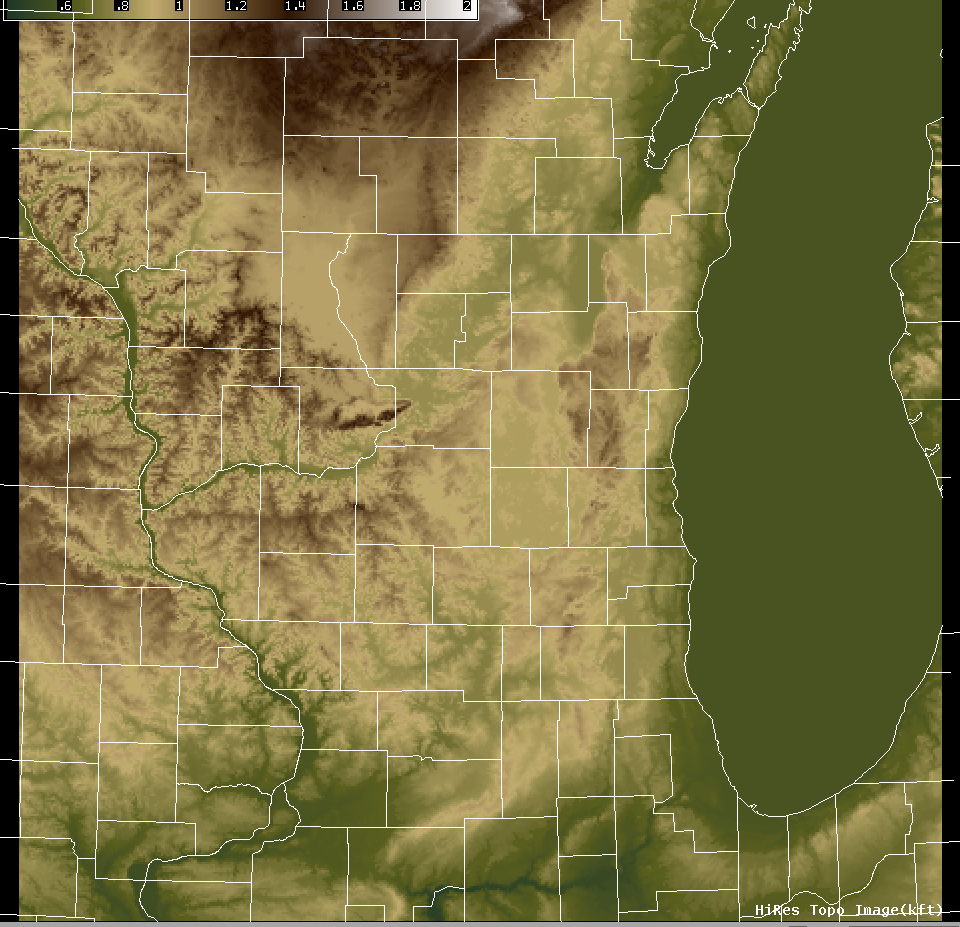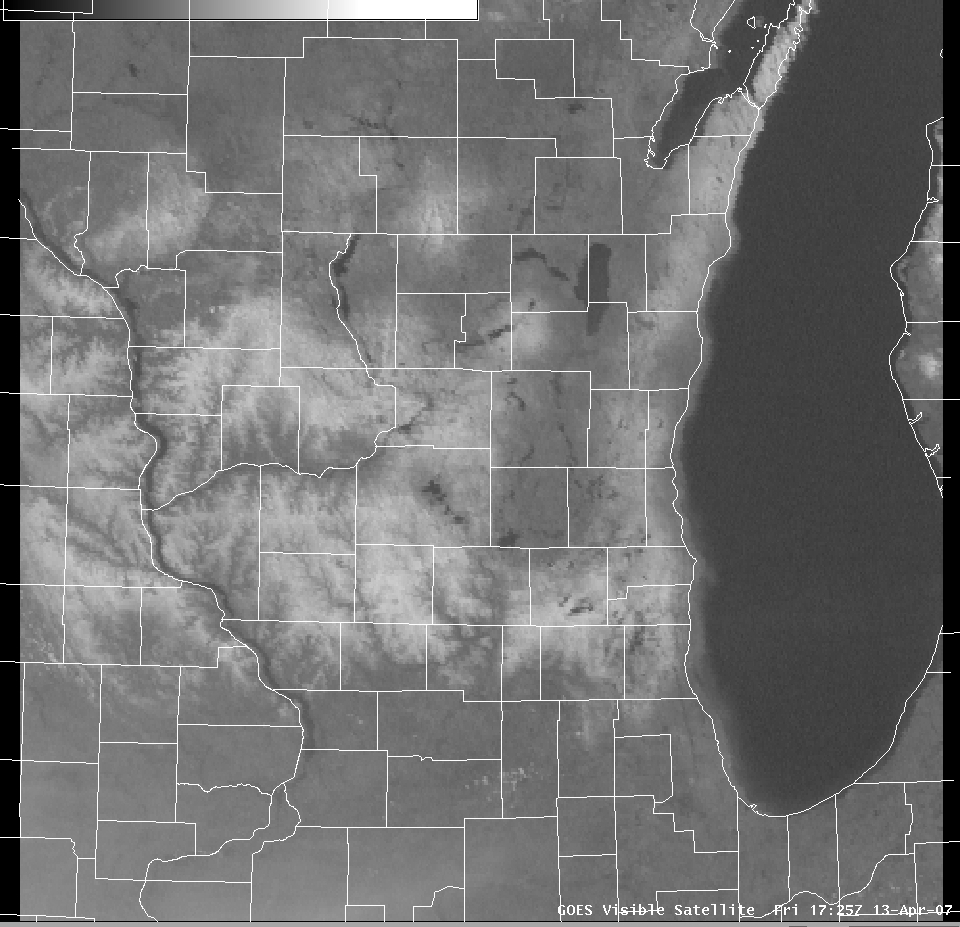Mesoscale variability of snowfall
The late-season snow event that affected southern Wisconsin on 11 April 2007 dropped as much as 6-12 inches of snow across much of the region (the 7.0 inches at Milwaukee and the 5.4 inches at Madison were both daily snowfall records). However, an AWIPS image of the GOES-12 visible channel (above) shows a good deal of mesoscale variability to the resulting snow cover 2 days following the storm. Of particular interest was the rather large “snow hole” over some of the eastern counties, as well as the lack of snow cover in the lower elevations of the Wisconsin River Valley (MODIS true color images: Wisconsin | Madison hi-res). An AWIPS high-resolution topography image (below; Java applet to fade between the visible and topography images) shows that the large snowfall minimum (NOHRSC 72 hour snowfall reports) was in the area to the west of the higher terrain of the Kettle Moraine; with strong easterly to northeasterly winds during the event (winds gusted to 52 mph at Milwaukee), perhaps a downsloping effect may have helped to keep the area west of the higher terrain slightly warmer (surface air temperatures were near freezing during much of the snowfall period), therefore limiting snow accumulations there.



